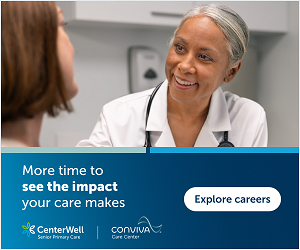Well before I was a physician, I was an art history major at Bowdoin College. Beneath towering pine trees, I spent much of my time in dim lecture rooms off the quad and in the quiet galleries of Maine’s art museums, studying paintings, sculptures, and photographs to understand not just what was being portrayed, but also what they revealed about the people, places, ideas, and defining events of their time. The more I learned, the more I appreciated art’s ability to both reflect the world around us and influence how we see it. At the time I could not have imagined how that lens would shape my work, years later, in public health.
Today, I serve as a physician and public health professional in behavioral health in the San Francisco Department of Public Health. In my role I think often about how we can reduce the structural and interpersonal stigma faced by people who use drugs. Stigma is a profound barrier to care. It can affect whether someone seeks treatment, whether a neighborhood accepts a harm reduction program, and whether legislators support evidence-based policies. Understanding the drivers of drug-related stigma is an important and necessary endeavor.
In public health, we have for years recognized how the language we use influences stigma. For example, terms such as “substance abuser” or “addict” elicit more negative reactions than person-first language, such as a “person with a substance use disorder.” Messaging that focuses on personal responsibility tends to increase stigma, whereas messages that emphasize structural causes tend to reduce it. But while the research on language is robust, comparatively little has been done on the role of images.
And yet we process the world visually. Nearly 90 percent of Americans report getting their news online, often from sources saturated with photos. These photos often precede text, and in some cases, it is the only part of a story that a reader will engage with. It is photos that capture our attention as we rapidly scroll through hundreds of social media posts. Furthermore, posts with photos are more likely to be shared than those without, ensuring that salient visuals remain at the fore of our daily stimuli. This makes the choice of photos not simply an editorial decision, but a consequential one. Having spent years thinking about art and its composition and meaning, I wanted to know: How do photos shape public perception of people who use drugs? Which heighten stigma? Which lessen it?
To explore these questions, my colleagues at the Johns Hopkins Bloomberg School of Public Health and I conducted a recently published message-testing experiment. Over 3,400 adults in the U.S. were randomized to view one of eight photos used by the media in its reporting on today’s overdose crisis or to a no-exposure control group. The photos were selected from real news stories and reflected common depictions of substance use: a person injecting drugs, being revived following an overdose, receiving medication treatment, a person in recovery, and someone who had lost a family member to an overdose. After viewing the photo and a short descriptive caption, study participants were asked questions about their current emotions, their willingness to live near and work with a person with a substance use disorder, and their acceptance of drug-related services in their neighborhood.
Our results were revealing: Photos of individuals in recovery were associated with lower stigma. Compared to the control group, study participants who viewed a photo of someone in recovery were significantly more likely to say they would be willing to work and socialize with someone with a substance use disorder. While this finding is perhaps intuitive, our study provides some of the first empiric evidence that humanizing photos may reduce stigma.
Conversely, photos portraying active drug use or overdose evoked disgust and pity, but they did not increase stigma compared to the control group. It is possible that these types of photos have been normalized. They are commonly used by the media and are expected. People may already associate drug use with certain visuals and cues, so these photos may not shift perceptions because they confirm rather than challenge pre-existing beliefs.
None of the photos we tested, regardless of their effect on emotions or stigma, significantly increased support for treatment or harm reduction services. This suggests that reducing stigma is important at an interpersonal level but may not be enough to overcome the “Not In My Backyard” or NIMBY attitude that often blocks the siting of needed public health programs. How to turn understanding and empathy into policy support is a challenge we struggle with at the local level and is one that manifests at the state and federal level as well.
Still, the implications of the study are notable. Images matter, as they have for thousands of years. Photos today do not just passively adorn an article’s text, but they tell their own stories. They shape how we feel and how we relate to the words on the page. They can establish who is seen as deserving of care and what kinds of interventions feel acceptable. And they reflect who we are and what we value. This is why I believe we as public health professionals, journalists, photographers, and policymakers must all be more conscious of, and intentional with, our visual storytelling.
This research has brought me back to my art history roots and it continues to inform my work in a deeply meaningful way. Indeed, the usefulness of understanding design, representation, and symbolism extends beyond art appreciation to efforts to shift public consciousness, destigmatize an urgent health topic, and advance the common good.
As we continue to confront this public health crisis, I believe we need every tool at our disposal, including clinical interventions, policy reform, community partnerships, accurate and compassionate reporting, and yes, better images.
Jeffrey Hom is the medical officer for science and policy in the Substance Use Services section of the San Francisco Department of Public Health and practices at Zuckerberg San Francisco General Hospital. He advises on equity-driven, population-level strategies to reduce the harms of risky substance use and provides clinical care through the county’s opioid treatment and buprenorphine telehealth programs. Board-certified in internal medicine and public health, Dr. Hom previously led the Division of Substance Use Prevention and Harm Reduction in the Philadelphia Department of Public Health and served as a policy advisor during the city’s COVID-19 response. His recent work includes “The Impact of News Photographs on Drug-Related Stigma: A Randomized Message Testing Experiment in a National Sample of US Adults.” More information about his work can be found on LinkedIn.






















![It's OK to want a different life in medicine [PODCAST]](https://kevinmd.com/wp-content/uploads/Design-3-190x100.jpg)


